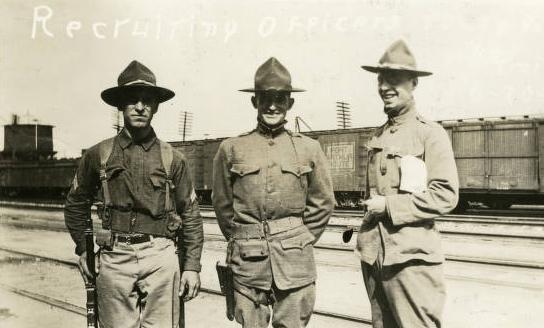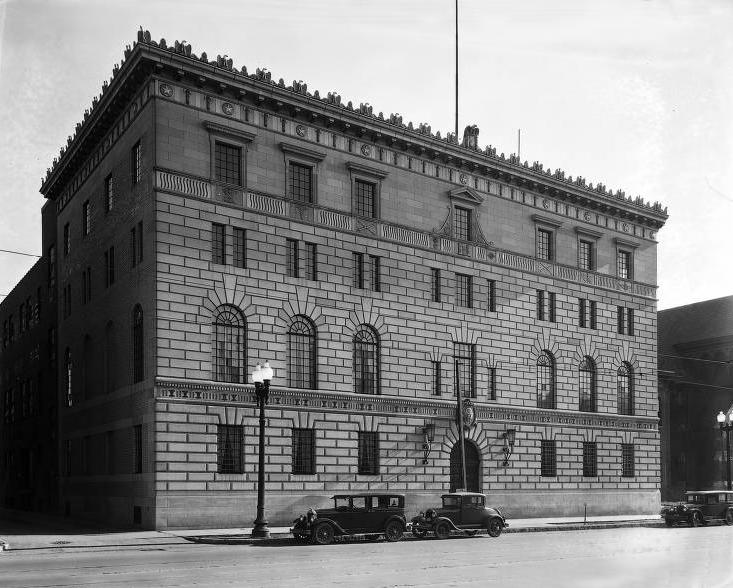The Indiana National Guard traces its beginnings to 1801 when the Indiana Territory organized companies to defend local settlements. In 1811, territorial militiamen served at the Battle of Tippecanoe alongside Brigadier General William Henry Harrison. In 1846, the 2nd and 3rd Regiments of Indiana Volunteers were formed to serve in the . These regiments were organized from existing independent companies across the state of Indiana.

Immediately after the start of the Civil War in 1861, the Indiana General Assembly organized the Indiana Legion to serve as the state’s active militia. Some 700 companies were organized for the Legion statewide between 1861 and 1865. Hoosier militiamen aided the Union cause significantly by protecting the home front from invasion, especially in the state’s southern counties along the Ohio River, and providing recruits for the federal armies.
The Indiana Legion was redesignated Indiana National Guard on March 5, 1895. It was not until the early 20th century, however, with the passage of the National Defense Act of 1916, that the Indiana National Guard was more formally integrated into the federal defense establishment. In that year, Governor Samuel M. Ralston was commander-in-chief of the Guard, while day-to-day control was exercised by Adjutant General Franklin L. Bridges.
In June 1916, preparations for Indiana’s centennial celebration were suddenly interrupted when President Woodrow Wilson issued a call to mobilize the National Guard for active federal service on the Mexican border in response to an anticipated invasion of Texas by the Mexican Army. At Bridges’ direction, Guardsmen from throughout the state were mustered in at near Indianapolis and quickly moved to an Indiana encampment at Llano Grade, Texas, by early July. A war with Mexico never materialized, however, and by late 1916 troops began to return to Indiana and other home states.
The following year, the Guard faced another mobilization. War Department instructions were issued in May 1917, even while some Indiana troops were still returning from Texas. On August 5, 1917, the entire National Guard was ordered into federal service for .

One Indiana Guard regiment was ordered to Fort Benjamin Harrison and became part of the new 42nd (Rainbow) Division. The remainder of the Guard went to Camp Shelby, Mississippi, and was organized as the 38th Infantry Division Indiana National Guard (38th ID) on August 25, 1917. The 38th ID was given the nickname “Cyclone Division” after a tornado struck the group’s training camp on April 17, 1918. Five months after this incident, 38th ID was deployed to France during the closing days of World War I.
While the Indiana National Guard was in federal service, a brigade of State Militia was organized with headquarters in Indianapolis. Following the war, Headquarters 38th Division was organized in 1923 at Indianapolis with Maj. Gen. in command.

A new permanent military armory was needed for a headquarters of this size, and as a result, the Indianapolis Armory (later ) at 711 North Pennsylvania Street was constructed and was occupied in late 1926. Prior to that, the division headquarters had occupied rental space in the Chalfant Building on the northwest corner of Michigan and Pennsylvania Streets.
On August 1, 1921, the Indiana Air National Guard (IANG) was established with the formation of the 137th Observation Squadron at Fagley Field in Kokomo. The squadron was redesignated the 113th Observation Squadron on January 25, 1923.
In 1926, the city of Indianapolis opened a municipal airport in that was jointly used by city residents and the Indiana Air National Guard. The 200-acre site was under the control of the 113th Observation Squadron, who made the air facility its new headquarters.
Mars Hill Airport (also known as Indianapolis National Guard Airport, National Guard Flying Field, and Cox Field) was renamed in 1929 in honor of Lt. Richard H. Stout, a decorated World War I veteran and a pilot of the 113th Observation Squadron, who died in an airplane crash on Schoen Field at Fort Benjamin Harrison.

In 1931, Stout Field was purchased by the State of Indiana after a larger municipal airport was built on the westside of Indianapolis (see ). The Indiana National Guard spent the next several years improving the facility, including constructing two additional hangars, a control tower, and an administration building.
In 1933, the state purchased the Capitol Warehouse at 2000 South Madison Avenue and reconfigured it as the Indianapolis Motor Armory. The field artillery of the Indiana National Guard was horse-drawn at the time, and many of its horses were kept at the on East 38th Street. But in 1935, the Guard began the conversion from horse-drawn to truck-drawn artillery, and other facilities were needed. A new Indianapolis Artillery Armory was built at 2015 South Pennsylvania Street immediately west of the motor armory and was occupied in early 1940.
An adjunct to the Indiana National Guard that also operated under the governor and the adjutant general was the Indiana Naval Forces. In late 1937, they relocated from rental facilities in the Cole Motor Car Company building at 730 West Washington Street into the new on the east bank of White River at the 30th Street bridge.
On January 17, 1941, the Indiana National Guard was called into federal service again as the United States prepared for entry into . The 38th Indiana Division returned to Camp Shelby to reorganize as a triangular infantry division and train for combat. The division’s 151st Infantry Regiment served in the Southwest Pacific Theatre, taking part in the New Guinea, Leyte, and Luzon campaigns, between 1944 and 1945. Success at the Battle of Bataan in the Philippines earned the 38th ID the nickname “Avengers of Bataan” from General Douglas MacArthur.
Back at home, the adjutant general’s office remained and was headquarters for the Indiana State Guard during the war. Stout Field, meanwhile, was leased to the US Army Air Forces for $1. The facility served as the headquarters of the I Troop Carrier Command, which directed glider training activities throughout the United States. Stout Field reverted back to state control after the war.
Starting in Indianapolis in 1946, the National Guard began a three-year period of (re)organization, this time with an Army National Guard (ARNG) and a new Air National Guard. Indianapolis served as the central coordinating headquarters location for subsequent mobilizations for active federal service in 1951 for units of the Army and Air Guard during the and in 1961 for the Air Guard during the Berlin Crisis, the cold war conflict between the United States and the Soviet Union regarding the status of the divided city of Berlin that resulted in construction of the Berlin Wall.

In December 1960, the office of the adjutant general relocated from the State House to the new State Office Building immediately west across Senate Avenue. Four years later to the month, the office relocated again to its current permanent headquarters at Stout Field.
On May 13, 1968, more than 12,200 Army National Guardsmen throughout the country were mobilized for service during the . Of the estimated 76 ARNG units called up to active duty, only 8 units and 2,729 soldiers served in Vietnam, including Indiana’s Company D (Ranger), 151st Infantry Regiment (D-151 IN). D-151 IN had the distinction of being the only ARNG ground maneuver unit to serve in Southeast Asia.
Arriving in Vietnam in December 1968 as part of II Field Force, the largest corps command in the conflict and one of the largest in U.S. Army history headquartered in Long Binh northeast of what is now Hồ Chí Minh City, the Indiana Rangers were assigned reconnaissance and intelligence-gathering missions. In late 1969, D-151 IN exited the Vietnam War having been decorated 538 times, which was more than any other Army infantry company during any one-year period in Vietnam.
In December 1977, the largest armory constructed in the nation to that date since World War II opened at 3912 West Minnesota Street just north across the street from the original Stout Field proper. The following year, both the motor armory and the artillery armory on the city’s southside were sold.
By the 1980s, the Indiana National Guard Headquarters and the United States Property and Fiscal Office (USPFO) (which moved to Stout Field in 1951) had outgrown their space and needed to expand. Two new buildings, the USPFO building and the Headquarters building were constructed at Stout Field in the late 1980s and dedicated on May 6, 1990.
The Indiana National Guard continued to grow throughout the 1990s, 2000s, and 2010s, with select guardsmen mobilized to serve in the , War in Afghanistan, and War in Iraq. Back at home, the Guard’s growth resulted in another major renovation of Stout Field in 2012. The National Guard Headquarters building and USPFO building were combined and increased in size from 37,375 square feet to approximately 117,375 square feet.
Stout Field is home to the Indiana National Guard’s major command units, including the joint headquarters staff, Indiana Army National Guard, Indiana Air National Guard, and the 38th Infantry Division Band. This facility acts as command-and-control centers for statewide emergency assistance operations as a result of severe flooding, devastating tornados, winter blizzard conditions, and countless other instances of rescue efforts and community assistance programs for Indiana citizens.

Help improve this entry
Contribute information, offer corrections, suggest images.
You can also recommend new entries related to this topic.